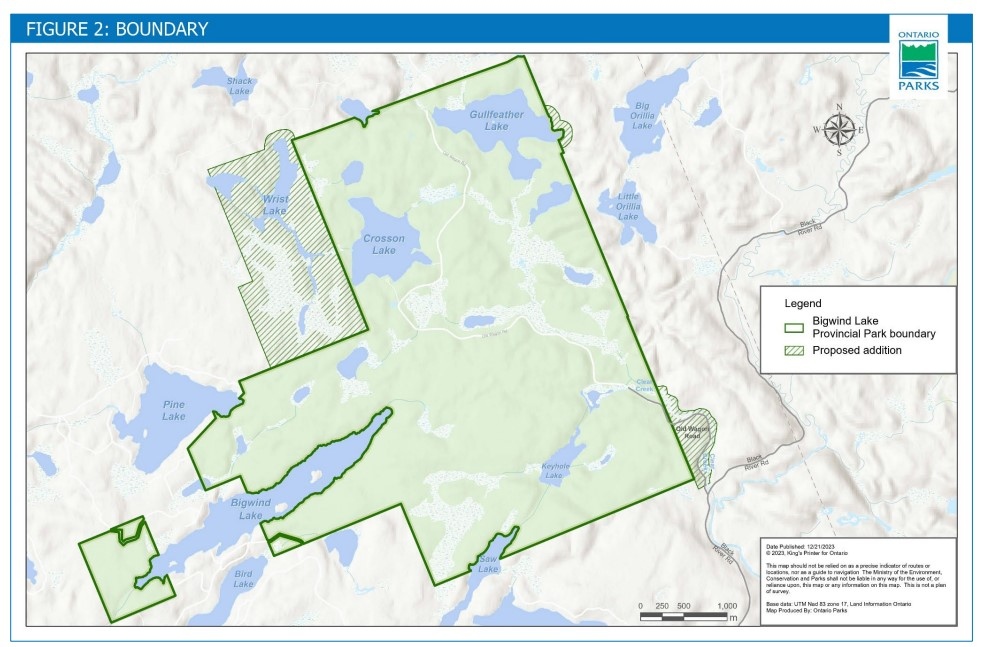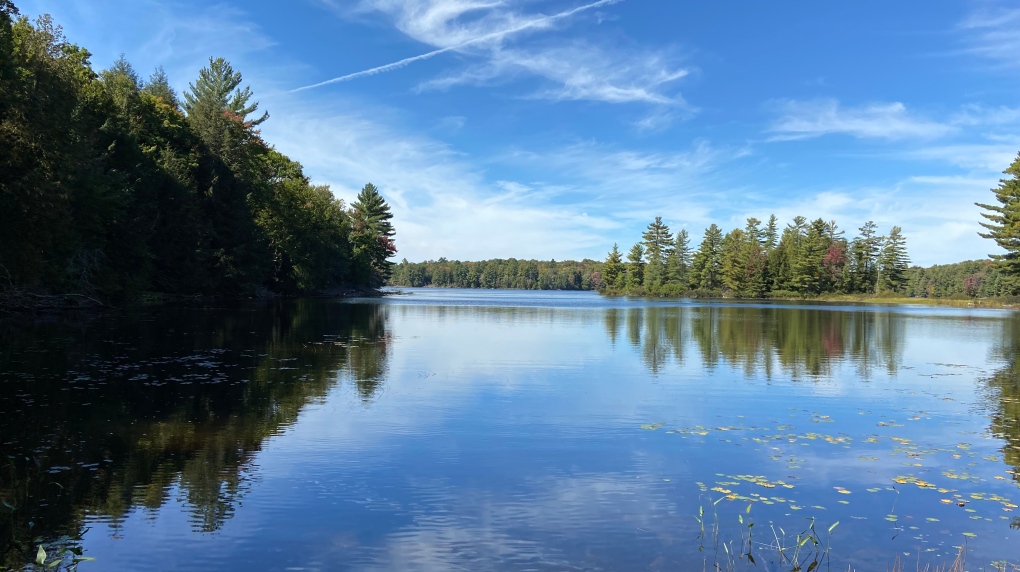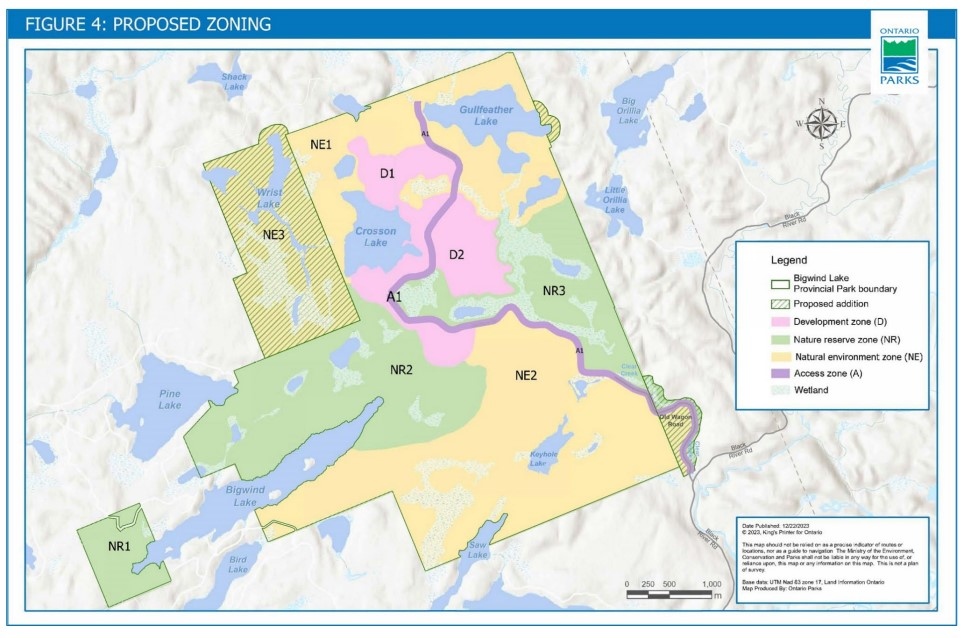New details released about Ontario’s new provincial park
The province has released a first look at its proposal for a new operating provincial park, including a potential boundary expansion, integrated trail network, and name change.
Last year, the Ontario government announced it would be transforming Bigwind Lake Provincial Park, east of Bracebridge, Ont., into an operational campground.
Few details were released at the time, with the government saying only that the park will offer overnight and electrified campgrounds, background camping and four-season recreational activities.
The province released its preliminary management plan this week for a second round of public commentary.
In it, the government expresses an interest in expanding the park boundary to include an additional 274 hectares of land northwest of the park, in addition to 34 hectares southeast and six hectares along Gullfeather Lake.
“This proposed park boundary expansion would provide long-term protection and enhanced opportunities for recreational activities, such as hiking and backcountry camping,” officials noted in the proposal.
The name of the provincial park is also up for debate following consultation, with some people expressing concerns that visitors may get confused as Bigwind Lake is technically not within the provincial park.
“The regulated boundary of the park includes a portion of the Bigwind Lake shoreline and does not include the lake itself,” officials noted. “There is no authorized public access from Bigwind Lake into the park.”
 The Ontario government is proposing an expansion of Bigwind Lake Provincial Park as it transforms it into an operational campground.
The Ontario government is proposing an expansion of Bigwind Lake Provincial Park as it transforms it into an operational campground.
If the province decides to change the name, it says it will collect further feedback from Indigenous communities and other stakeholders.
Bigwind Lake is believed to be named after Chief Bigwind from the Chippewas of Rama First Nation.
Camping and recreation
There will be about 250 campsites at the park, including electrical and non-electrical options for tents, trailers and RVs.
The province also says there will be up to 25 walk-in campsites and up to 25 roofed accommodations, along with washrooms, showers, as well as dishwashing and laundry facilities.
A maximum of 25 backcountry sites will be developed, including a few canoe-in campsites on Gullfeather Lake and a currently un-named lake further south.
 Bigwind Lake Provincial Park is seen in this undated photograph provided by the Ontario government.
Bigwind Lake Provincial Park is seen in this undated photograph provided by the Ontario government.
The park’s integrated trail network will “provide a variety of recreational opportunities and minimize the need for roads and parking areas.”
It will include, according to the preliminary plans, an accessible trail, walking trails throughout the campgrounds, a trailhead located at the visitor services hub, portage trails to provide access to lakes and a natural “active trail.”
The active trail will introduce “challenges and obstacles that fit into the surrounding environment and promote exercise, movement and creativity.”
There will also be opportunities for cross-country skiing and snowshoeing trails.
Sport fishing and snowmobiling will be allowed, as well as some hunting pending regulatory approval.
Zoning
Certain areas of the provincial park have been designated development zones.
 The Ontario government has re-zoned Bigwind Lake Provincial Park.
The Ontario government has re-zoned Bigwind Lake Provincial Park.
It’s in these zones that the province will build campgrounds, day-use areas and associated infrastructure. This also includes a visitor services hub, as well as administrative and maintenance areas.
There are also nature reserve zones, which “may be refined or expanded during the detailed design phase,” as well as natural environment zones. These zones will allow for trails and minimal infrastructure while protecting sensitive species and habitats.
Hundreds of plants as well as dozens of birds, amphibians and fish have been identified within the park, including 14 at-risk and rare species.
Members of the public have until May 14 to provide commentary on both the preliminary plans and the border expansion.
View original article here Source









